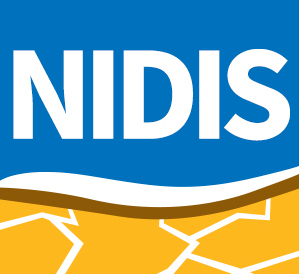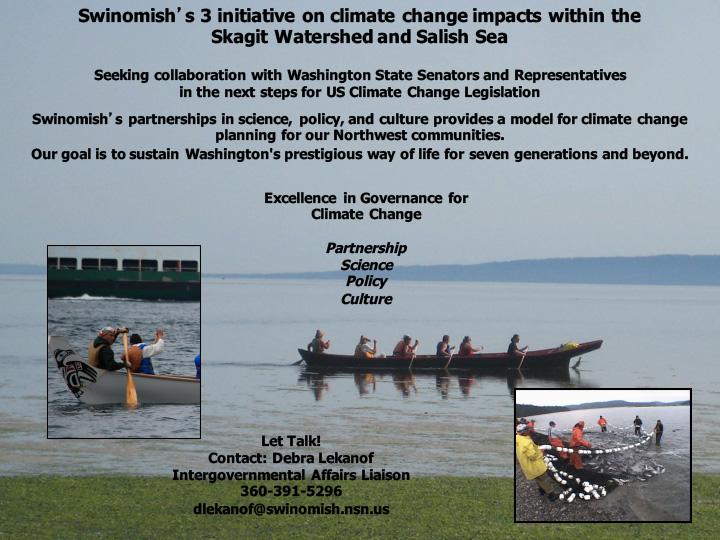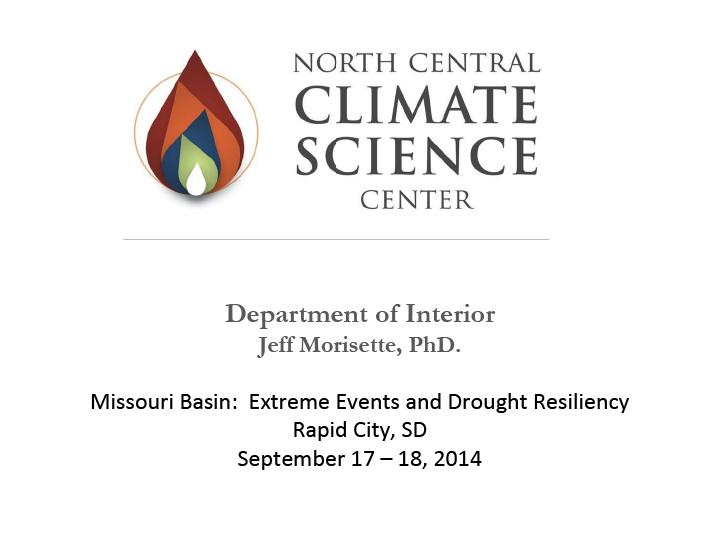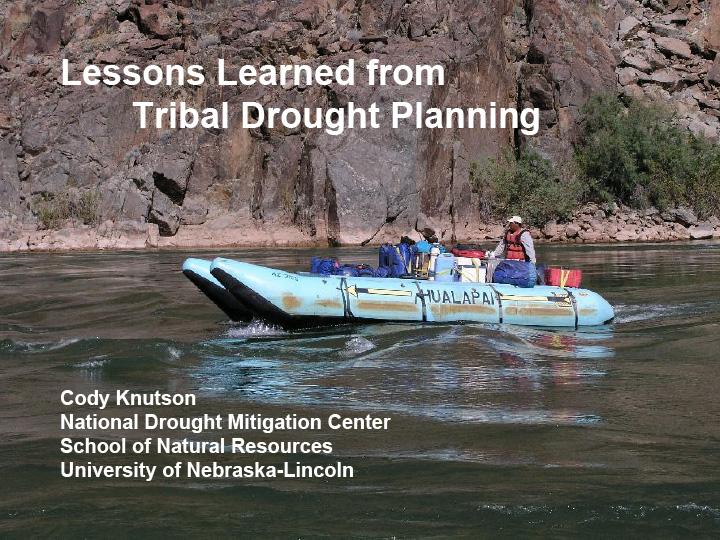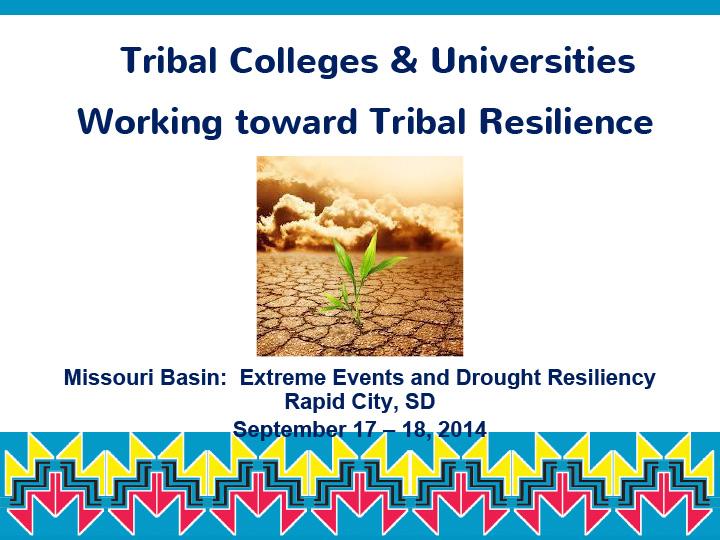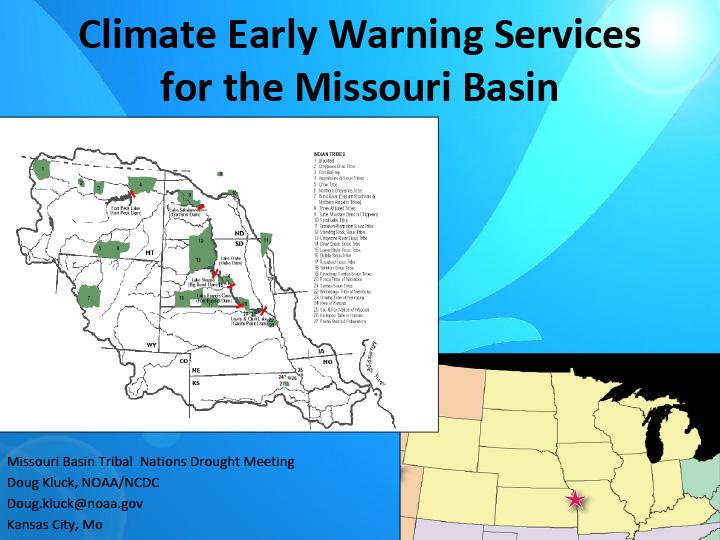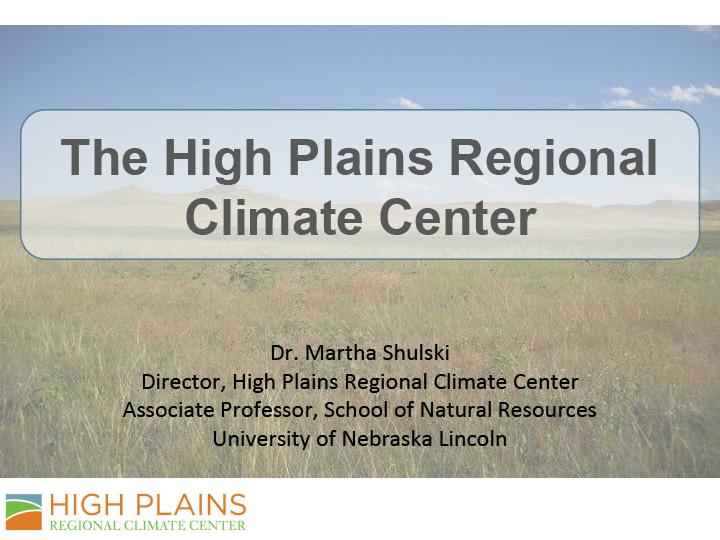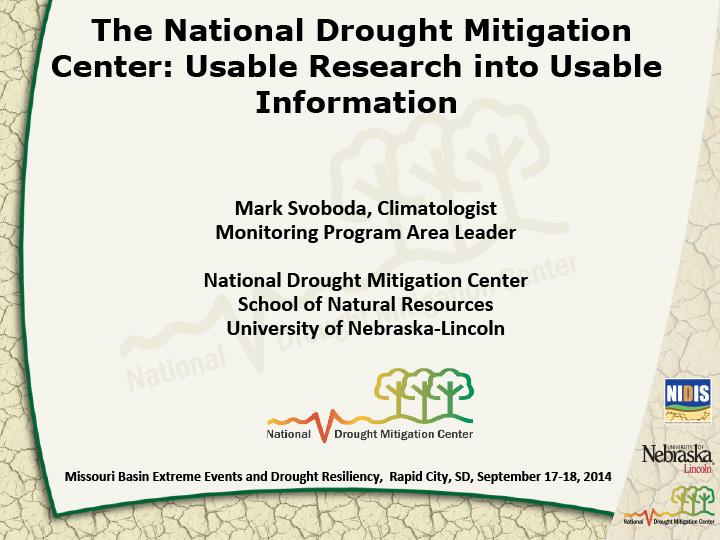A presentation that was given at the Tribal Climate Change Adaptation Planning & Inter-Governmental Coordination Workshop which took place October 5-6, 2010 in Boulder, Colorado. Presentation was given by Debra Lekanof of the Swinomish tribe of Native Americans. Talks about the issues facing the Swinomish tribe as a result of climate change and uses experiences from the reservation as a case study.
Presentation given by Jeff Morisette of the North Central Climate Science Center at the Extreme Events and Drought Resiliency Workshop which was held November 17-18, 2014.
A slideshow that was presented by Cody Knutson of the National Drought Mitigation Center during the Extreme Events and Drought Resiliency tribal engagement workshop in Rapid City, South Dakota on September 17-18, 2014. Purpose of the presentation was to highlight some of the lessons learned about drought planning using the Hualapai Tribe and their experiences as a case study.
Presentation given at the Extreme Events and Drought Resiliency workshop in September 17-18, 2014 in Rapid City, South Dakota. Discusses the importance of monitoring for stream health and some of the pollutants and sources that are cause for alarm. Talks about some of the important types of data that are taken to gauge stream health and shows how this data is analyzed and turned into usable data.
A presentation by Al Kuslikis of the American Indian Higher Education Consortium that took place during the Extreme Events and Drought Resiliency workshop in Rapid City, South Dakota September 17-18, 2014. Presentation discusses the role tribal colleges and universities (TCUS) can play in monitoring drought conditions and responding to them.
Presentation given by Syed Huq of the Rosebud Sioux Nation at the Extreme Events and Drought Resiliency Workshop that was held in Rapid City, South Dakota on November 17-18, 2014. Presentation discusses the sources of groundwater on the Rosebud Reservation and points out sources of contamination as well as protection strategies.
Presentation given at the Extreme Events and Drought Resiliency workshop held September 17-18, 2014 in Rapid City, South Dakota. Discusses extreme weather events that have occurred in the Missouri River Basin over the last decade and the damage they caused. Presentation also provides various resources for stakeholders that deal with weather and drought in the High Plains.
Presentation given at the Extreme Events and Drought Resiliency workshop that took place September 17-18, 2014 in Rapid City, South Dakota. Discusses the work done by the High Plains Regional Climate Center and how they take weather data and turn it into an end product that is usable by stakeholders.
Presentation given by Mark Svoboda of the National Drought Mitigation at the Extreme Events and Drought Resiliency Workshop held in Rapid City, South Dakota on November 17-18, 2014. Presentation discusses how data can be taken and synthesized for use in informing for the Drought Early Warning System.
A presentation given by Valerie Small of Wolf Mountain Environmental at the Extreme Events and Drought Resiliency Workshop that was held November 17-18, 2014. Presentation takes a look at riparian ecosystems on the southern Montana Crow Reservation and discusses native plants like the plains cottonwood and investigates how invasive species such as the Russian olive are harming these natives plants. The potential for loss of cultural expression by these tribes as a result of the loss of native plants important in medicine and ceremony is also touched on.

